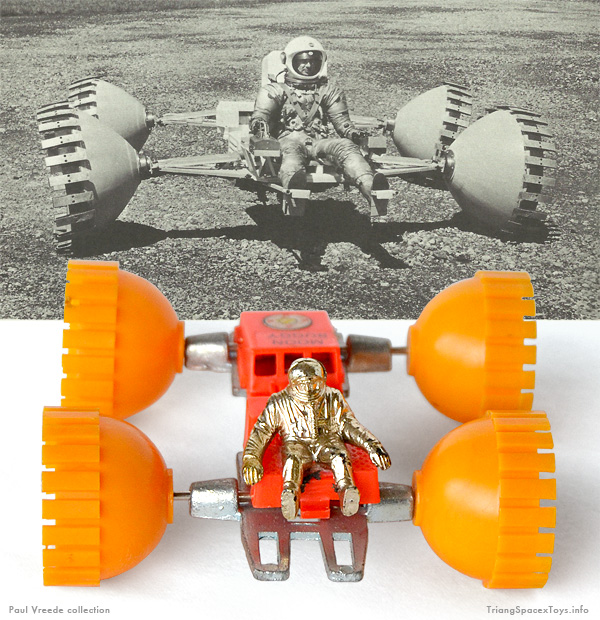
Long before Apollo 15 took the first Lunar Roving Vehicle to the Moon, landing there on July 30, 1971, NASA and its contractors had been studying ways and means of increasing the astronauts' radius of operations through some form of transport. Over the years, many companies entered many proposals for various types of vehicle, including a basic Mobility Test Article (the initial name for what would later be called LRV) that needed to be compact, lightweight, and capable of traversing all kinds of terrain. Both popular and specialised press regularly reported on proposals and tests, the latter being staged on purpose-built test tracks or out in rocky deserts that would most closely resemble the lunar surface, everything being illustrated by pictures from NASA or the contractors' PR departments. (And if you compare the picture above with the Spacex card-back illustration, you'll see that that is what the illustrator used as an example).
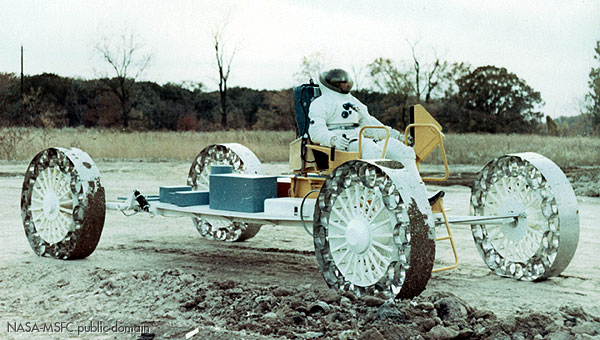
Amongst a great many proposals of rather utilitarian and often skeletal design (like the Bendix design above), the vehicle proposed by Grumman Corp. stands out as being one of the most elegant and visually exciting. Low-slung on large wheels, it simply personified the term "Moon Buggy" and looked like it would be capable of decent speed (1) coupled with excellent stability due to its low centre of gravity.
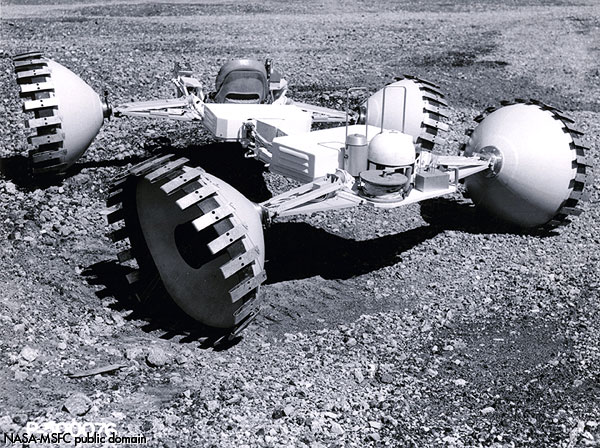
The hinge in the middle would also make it very manoeuvrable. Designed to meet various NASA requirements, the Grumman MTA could be assembled in various configurations, and operated by remote control as well.
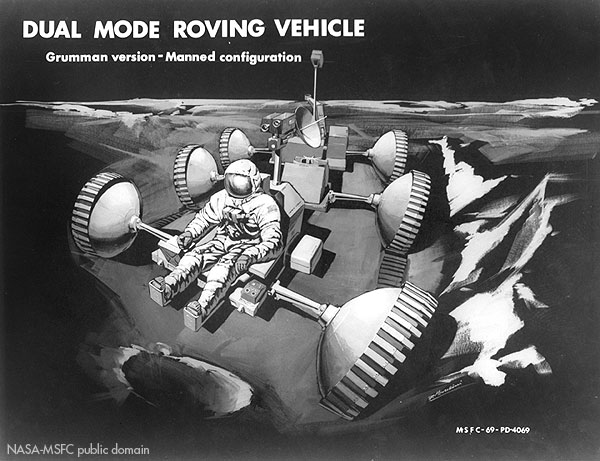
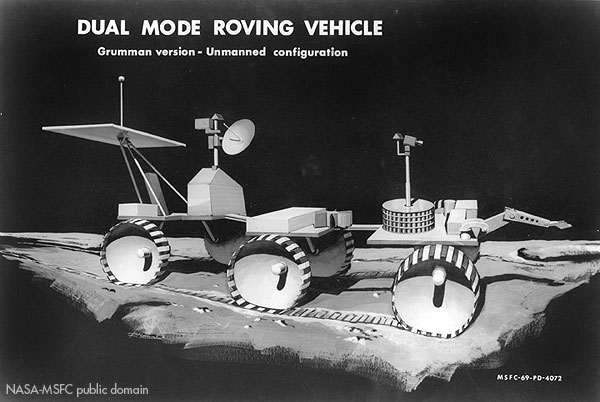
The wheel design merits a mention too. Invented by Grumman engineer Edward G Markow (patent shown below), it consists of a large flexible cone fitted with metal cleats for grip and traction. Positioning the wheel at an angle to the horizontal provided a better footprint and made the metal cleats really dig in. As proven by a contemporary 'road test' by Popular Science magazine(2), this was one very effective vehicle indeed.
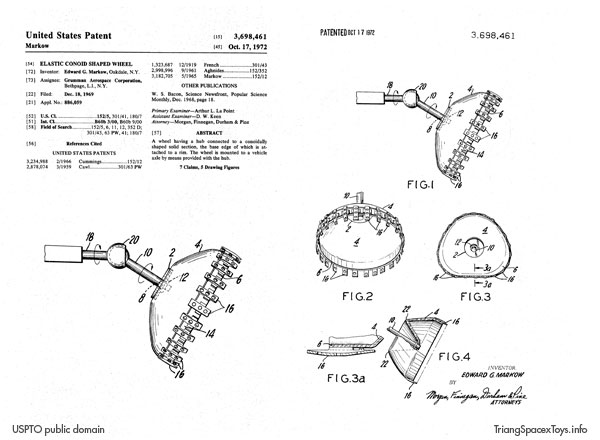
As we all know, the vehicle that eventually made it to the Moon was a Boeing design (3), with which the astronauts also seemed to enjoy themselves. Why the Grumman proposal never made it I don't know, but if you take a look at more recent proposals for extraterrestrial transport (on Mars, below), then you'll see a lot of that fitted with wheels that look remarkably like Edward Markow's cleated cones.
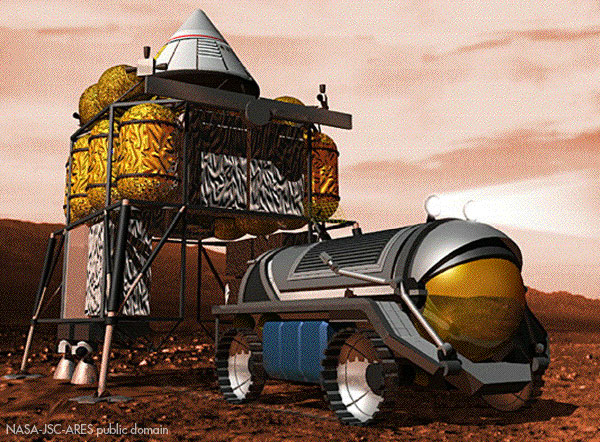
Spanish cousin
In closing, let me show the "Jeep Lunar" by Paya of Spain. It's a most impressive battery-operated toy of some 29 cm (just under 12") long and was produced in 1973 (thanks to Rob Godwin who read that on the box of his example).
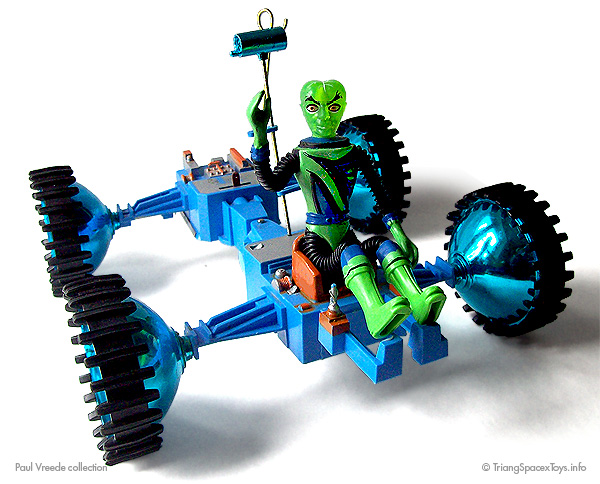
As will be apparent, my example is missing the original driver - a rather simple cartooney figure looking more like a 1960s racing driver than anything else (he may actually have been based on the test driver seen in photographs of the real MTA), also in pale blue with skin painted in pink and goggle rims painted brown.
Scale-wise the Paya vehicle would have made ideal transport for Major Matt Mason (the original driver figure actually being rather small compared to reality). But even though the Major justabout managed to cram himself into the narrow seat, he just isn't limber enough to lean forward and reach the joysticks. That's why a more slender and pliable Callisto ended up taking a joyride instead.
External links open in new pages. Just close them to get back here.
1: there's official NASA footage showing the Grummman MTA was pretty quick indeed.
More footage here. back to text
2: See Popular Science, Jan 1971 issue on their archive at Google Books. Keep scrolling down for the rest of the article, incl a little sidebar with Markow's comments on the wheel. back to text
3: Wikipedia is a good place to start for more information on the Boeing LRV. back to text
The Paya Jeep Lunar with its original driver as well as the box top can be seen at Moonbase Central. Rival company Comando also made a Jeep Lunar, powered by clockwork.